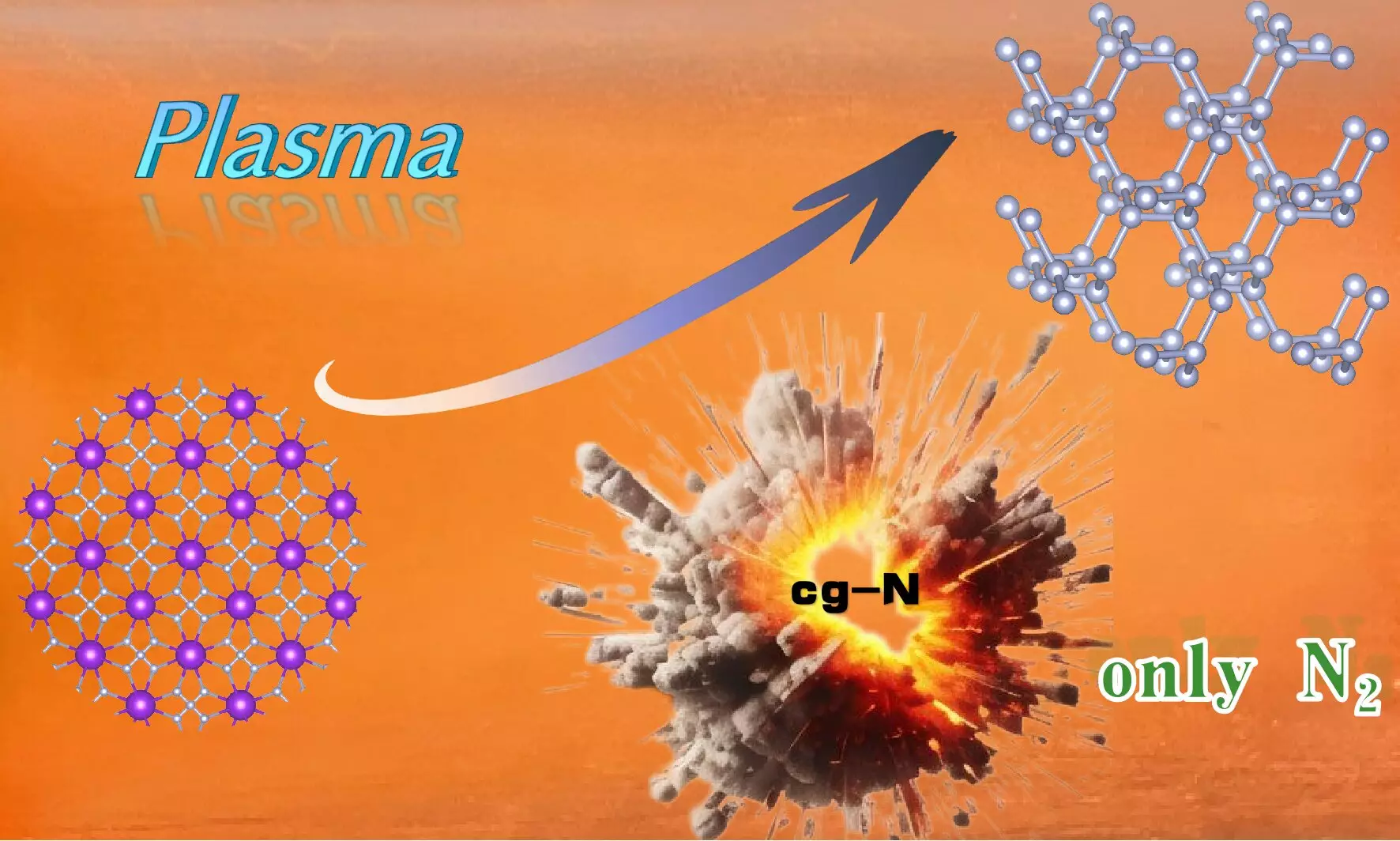In a groundbreaking study, a research team led by Professor Wang Xianlong from the Hefei Institutes of Physical Science at the Chinese Academy of Sciences has achieved a significant milestone in the synthesis of cubic gauche nitrogen (cg-N). Their work, published in *Science Advances*, elucidates a method of developing this high-energy-density material at atmospheric pressure. With its distinctive diamond-like structure formed solely from nitrogen atoms, cg-N has garnered interest for its potential applications, particularly due to its clean decomposition into nitrogen gas, presenting a viable pathway for energy-efficient materials in various fields.
The team’s innovative approach revolves around the plasma-enhanced chemical vapor deposition (PECVD) technique, applied to potassium azide (KN3) as a precursor. This choice is noteworthy as KN3 is less toxic and less explosive compared to other compounds used in similar experiments. Enhancing safety in the research process is crucial, particularly when dealing with high-energy compounds. The researchers utilized first-principles calculations to assess the stability of cg-N under varied environmental conditions, focusing on its surface behavior across multiple pressures and temperatures. This theoretical groundwork was pivotal in understanding the limitations and potential of cg-N synthesis.
One of the critical challenges the team addressed was the instability of cg-N when subjected to low-pressure conditions. The research indicated that surface instability often resulted in the premature decomposition of cg-N, which posed significant hurdles in its practical synthesis. By identifying that saturating surface suspension bonds could mitigate these instability issues, the researchers proposed a method for stabilizing cg-N at atmospheric pressure and temperatures as high as 750 K. This represents a landmark shift from previous methodologies that required higher pressures, making the synthesis of high-energy-density materials more accessible and practical.
The synthesized cubic gauche nitrogen displayed promising thermal stability, remaining intact up to 760 K before undergoing rapid decomposition. The thermogravimetric-differential scanning calorimetry (TG-DSC) techniques employed in this study provided empirical evidence of this stability, reinforcing the potential for cg-N in applications where thermal resistance is vital. The successful implementation of PECVD for the synthesis of cg-N not only further supports its performance as a potential energy-dense material but also paves the way for exploring similar compounds.
The implications of this research extend beyond the immediate findings related to cubic gauche nitrogen. By establishing a synthesis method that prioritizes safety and efficiency, this work opens doors for the development of other high-energy-density materials. The methodology and insights gained from this research can inspire future projects aimed at creating sustainable and safer energy alternatives, contributing significantly to advances in material science.
The achievements of Prof. Wang Xianlong’s team highlight a critical juncture in the field of material synthesis, pointing toward a future where high-energy-density materials can be produced safely and effectively, holding the promise of revolutionizing energy storage and utilization technologies.


Leave a Reply